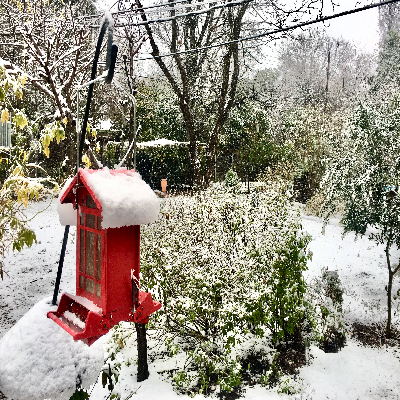
bringing nature, nurseries and gardeners together Jan 22, 2021
|
|
Welcome readers. What a wild ride this year has been so far. It is times like this when many of us find refuge in the garden. But don't get too relaxed out there ; - ). As you will see in Chris's article below, there is work to be done. / The Austin Garden is now available on Facebook. Please visit and 'like' our page. Many thanks - d.m. Austin Garden: facebook ❦
________________________________________________
Rainbow chard & potato pie: as part of Johnson's Backyard Farm CSA we are constantly looking for tasty and creative recipes for the weekly box of goodness. Top of our list right now is this pie by Megan Winfrey - a winning combo of chard, potatoes and gruyere cheese. Plus, a great opportunity to practice your mandolin skills. JBF ❦
________________________________________________
Seven new weird & wonderful plants: In the world of plant sciences, 2020 was full of new discoveries. Scientists named 150 + new plant and fungi species last year—from a flower described as 'the ugliest orchid in the world,' to a plant resembling a pile of uncooked French fries. Modern Farmer ❦

The science of native plant dye: Feb 27, 1 - 3 p.m. at the Wildflower Center ($25, virtual).Bring the colors of the meadow into your textiles by exploring the techniques and history of native plants used to dye fiber. Wildflower Center ❦
 Help us turn Hancock Golf Course into 50 ares of beautiful parkland in central Austin, by signing this petition: Hancock Conservancy Poll. ❦ Help us turn Hancock Golf Course into 50 ares of beautiful parkland in central Austin, by signing this petition: Hancock Conservancy Poll. ❦
________________________________________________
Central Texas Gardener: When faced with harsh slopes in their landscape, gardeners Michael Harper and Jed Duhon took to the challenge and turned them into inviting living areas and outlooks. KLRU ❦
 January in the Garden January in the Garden
by Chris Winslow
1. Plant a fruit tree. Many fruit tree varieties will arrive in local nurseries this month, and in February and March. Try apples, peaches, plums, persimmons, and pears.
2. Prepare spring vegetable garden. I would recommend the solarization method to get rid of weeds. Till your garden with a mechanical tiller or a garden spade and water the area thoroughly. Cover with a clear plastic film and secure the perimeter with rocks or soil. The sun will raise the temperature in the garden soil to levels that will kill weeds and seeds. Allow the film to stay on for a month to six weeks. When removed, your garden will be weed free. 3. Turn off sprinklers. Automatic lawn sprinklers should be set at a minimum or simply turn them off. (Turf grass is dormant.) 4. Plant a tree. There is still time. Maybe you purchased a living tree for the holidays. Find that perfect spot, plant it and water it in. 5. Catalog browsing. Find a comfortable armchair, and get to work! January is a good time to look through garden and seed catalogs to decide on varieties you want to grow this year. Starting a garden journal is a simple way to keep track of what you plant and what has been successful. 6. Plant asparagus. Now is the time to prepare beds and plant. Three year asparagus crowns will arrive in local nurseries early this month. Beds should be dug deeply and filled with rich organic compost. Three year crowns will put you closer to harvest than seed grown. 7. Onions are still possible. You still have the opportunity to produce large onions this year. Also you can plant turnips, collards, and radishes. ❦ |
 It's About Thyme Legacy Publications.
Contact newsletter editor Darrel Mayers with any ideas for articles or interesting links at internationalrain@yahoo.com (hitting 'reply' to this email won't work) |
|
|